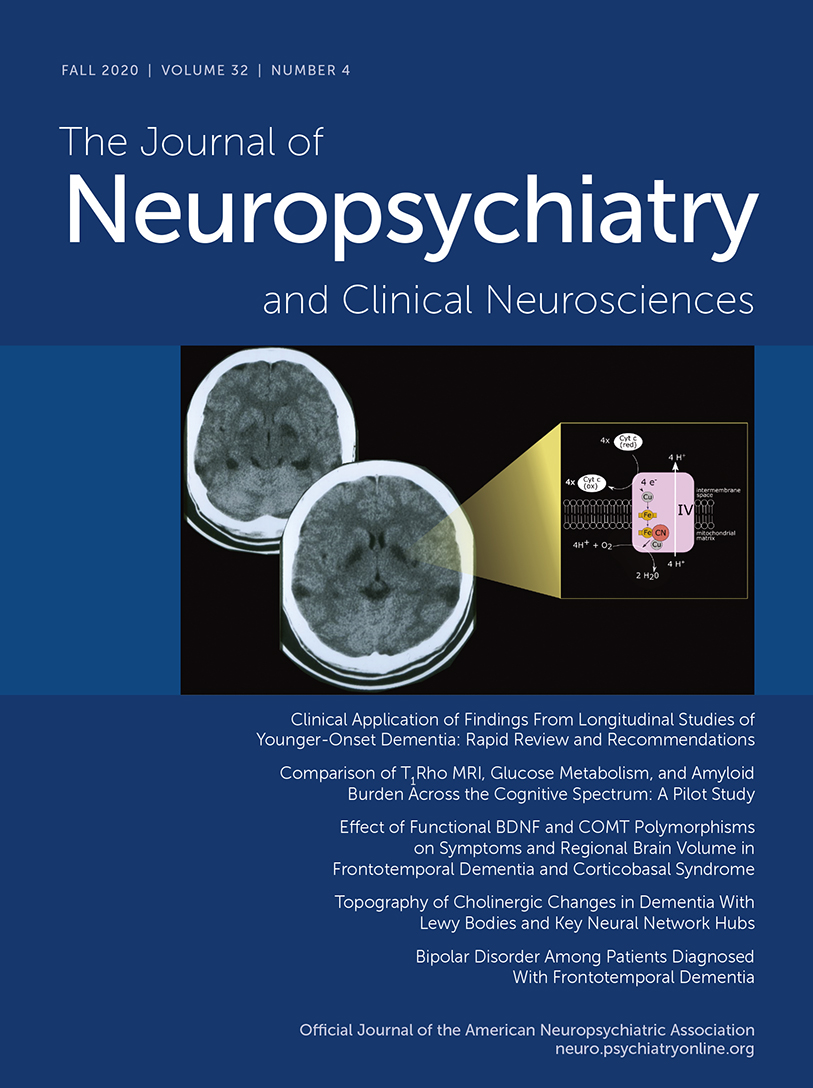Comparison of T1Rho MRI, Glucose Metabolism, and Amyloid Burden Across the Cognitive Spectrum: A Pilot Study
Abstract
Objective:
The pathological cascades associated with the development of Alzheimer’s disease (AD) have a common element: acidosis. T1rho MRI is a pH-sensitive measure, with higher values associated with greater neuropathological burden. The authors investigated the relationship between T1rho imaging and AD-associated pathologies as determined by available diagnostic imaging techniques.
Methods:
Twenty-seven participants (men, N=13, women, N=14; ages 55–90) across the cognitive spectrum (healthy control subjects [HCs] with normal cognition, N=17; participants with mild cognitive impairment [MCI], N=7; participants with mild AD, N=3) underwent neuropsychological testing, MRI (T1-weighted and T1rho [spin-lattice relaxation time in the rotating frame]), and positron emission tomography imaging ([11C]Pittsburg compound B for amyloid burden [N=26] and [18F]fluorodeoxyglucose for cerebral glucose metabolism [N=12]). The relationships between global T1rho values and neuropsychological, demographic, and imaging measures were explored.
Results:
Global mean and median T1rho were positively associated with age. After controlling for age, higher global T1rho was associated with poorer cognitive function, poorer memory function (immediate and delayed memory scores), higher amyloid burden, and more abnormal cerebral glucose metabolism. Regional T1rho values, when controlling for age, significantly differed between HCs and participants with MCI or AD in select frontal, cingulate, and parietal regions.
Conclusions:
Higher T1rho values were associated with greater cognitive impairment and pathological burden. T1rho, a biomarker that varies according to a feature common to each cascade rather than one that is unique to a particular pathology, has the potential to serve as a metric of neuropathology, theoretically providing a measure for assessing pathological status and for monitoring the neurodegeneration trajectory.



